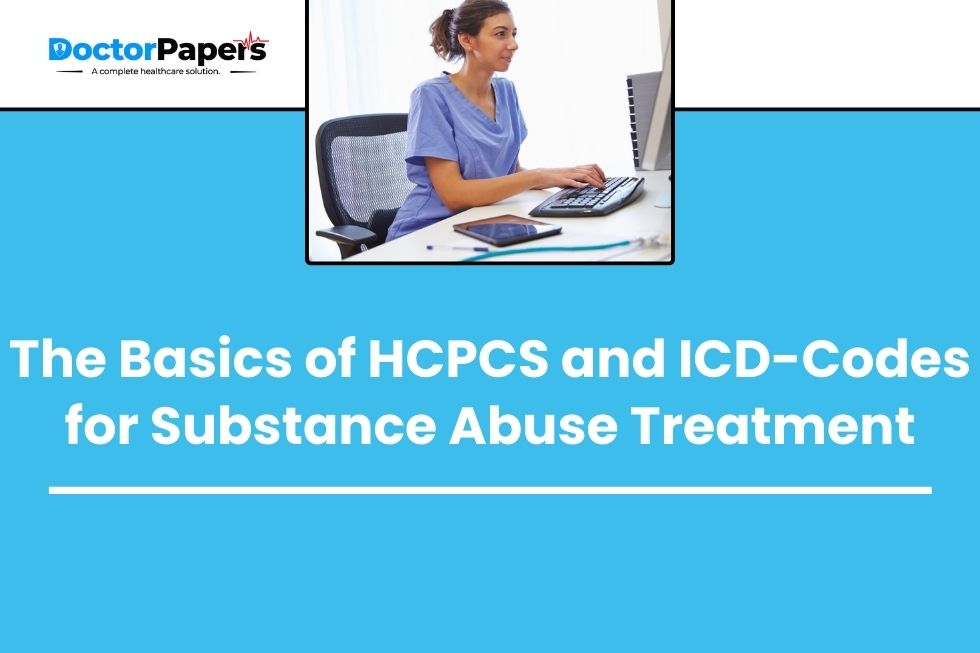Healthcare Common Procedure Coding System (HCPCS) and International Classification of Diseases (ICD) codes are two of the most important resources in this coding system. To guarantee that all substance and drug addiction treatments are properly documented and compensated, they act as intermediaries between the medical services and billing systems.
The fundamentals of HCPCS and ICD codes, along with their importance in the field of substance abuse treatment, will be discussed in this article, so stay tuned!
What is substance abuse?
Substance abuse is the harmful use of drugs. A person becomes completely dependent on substances; this dependence includes both mental and physical desires. It is the harmful or hazardous use of psychoactive substances, including alcohol and illicit drugs.
Side Effects of Substance Abuse:
Substance or drug misuse can cause several health problems, including liver damage or failure. Strokes, seizures, brain injury, and bewilderment. Problems with memory, attention, and decision-making, which make daily living more difficult. Therefore, its treatment, precaution, and awareness are necessary measures.
How are HCPCS codes used in substance abuse treatment?
HCPCS codes are used in the context of drug abuse treatment to precisely document and charge for a variety of services and procedures connected to the treatment of people with drug use disorders. These services can include:
- G0396 – Alcohol and/or substance (other than tobacco) misuse structured assessment (e.g., audit, dast), and brief intervention
This code represents a structured assessment for alcohol and/or substance misuse, followed by a brief intervention to address the issue.
- G9367 – At least two orders for high-risk medications from the same drug class
This code refers to the situation where a patient has received at least two orders for high-risk medications belonging to the same drug class.
- G9518 – Documentation of active injection drug use
This code indicates the documentation of active injection drug use in a patient’s medical records.
- G9637 – Final reports with documentation of one or more dose reduction techniques (e.g., automated exposure control)
This code is used for documenting final reports that show the use of one or more techniques to reduce the radiation dose in medical imaging, such as automated exposure control.
- H0023 – Behavioral health outreach service (planned approach to reach a targeted population)
This code represents a planned behavioral health outreach service designed to engage with a specific targeted population.
- H0030 – Behavioral health hotline service
This code is for a behavioral health hotline service that helps and support for mental health concerns.
- H0031 – Mental health assessment, by non-physician
Non-physician mental health evaluation.
- H0032 – Mental health service plan development by non-physician
Non-physician involvement in the development of a mental health service plan for a patient.
- H0035 – Mental health partial hospitalization, treatment, less than 24 hours
This code is used for mental health partial hospitalization, which involves treatment for less than 24 hours in a day.
- H0039 – Assertive community treatment, face-to-face, per 15 minutes
Assertive community treatment provided face-to-face in 15-minute intervals for individuals needing intensive mental health support.
- H0046 – Mental health services, not otherwise specified
Covers unspecified mental health services that don’t fall under specific categories.
- H2033 – Multisystemic therapy for juveniles, per 15 minutes
Multisystemic therapy for juveniles, delivered in 15-minute intervals, designed to address complex behavioral issues in young individuals.
- H2034 – Alcohol and/or drug abuse halfway house services, per diem
Halfway house services for individuals dealing with alcohol and/or drug abuse, with payment based on a per diem rate.
- S9475 – Ambulatory setting substance abuse treatment or detoxification services, per diem
Payment per diem for substance abuse treatment or detoxification services offered in an ambulatory setting.
- T1009 – Child sitting services for children of the individual receiving alcohol and/or substance abuse services
Child sitting services for children of individuals receiving alcohol and/or substance abuse services.
- T1010 – Meals for individuals receiving alcohol and/or substance abuse services (when meals not included in the program)
Payment for meals provided to individuals during alcohol and/or substance abuse services when meals are not included in the program.
- T1012 – Alcohol and/or substance abuse services, skills development
Alcohol and/or substance abuse services that focus on skills development for individuals seeking treatment and recovery.
What is ICD-10 Codes for Substance Abuse Treatment?
ICD-10 codes, which are used to categorize medical conditions, contain codes for treating abuse of substances. Here are some ICD-10 codes for substance abuse treatment:
- F14 – Cocaine related disorders
This code refers to mental and behavioral disorders caused by the use of cocaine, including intoxication, withdrawal, and other associated conditions.
- F15 – Other stimulant related disorders
This code covers mental and behavioral disorders resulting from the use of stimulants other than cocaine, such as amphetamines or other similar substances.
- F16 – Hallucinogen related disorders\
This code pertains to mental and behavioral issues stemming from the use of hallucinogenic substances, leading to symptoms like altered perception and cognition.
- F19 – Other psychoactive substance related disorders
This code encompasses mental and behavioral disorders arising from the use of various psychoactive substances other than those specifically mentioned in other codes, indicating a wide range of substances.
- G44 – Other headache syndromes
This code covers headache illnesses other than tension or migraine, frequently with unique symptoms and causes.
- Z63 – Other problems related to primary support group, including family circumstances
This code covers family and primary support group issues.
- Z81 – Family history of mental and behavioral disorders
Shows a family history of mental and behavioral problems, which may be useful for examining genetic or hereditary health issues.
- F10 – Alcohol related disorders
This code includes alcohol-related mental and behavioral concerns such alcohol dependency and alcohol-induced illnesses.
- F11 – Opioid related disorders
Opioid dependency and withdrawal are covered under this code.
- F12 – Cannabis related disorders
This code discusses cannabis-related mental and behavioral diseases, including symptoms.
- F13 – Sedative, hypnotic, or anxiolytic related disorders
Sedatives, hypnotics, and anxiolytics cause mental and behavioral problems, including overuse and withdrawal.
- F18 – Inhalant related disorders
Covers mental and behavioral diseases produced by inhalants, volatile chemicals ingested for intoxication.
- Z71 – Persons encountering
This category indicates a wide variety of healthcare contacts for those seeking medical guidance or counseling for non-specific issues.
Conclusion:
ICD codes offer diagnoses, whereas HCPCS codes describe particular services and procedures. Adequate use of these codes guarantees correct reimbursement and efficient communication throughout the healthcare system, eventually promoting thorough and successful substance abuse treatment.










